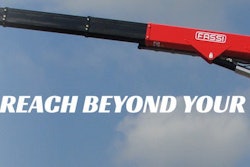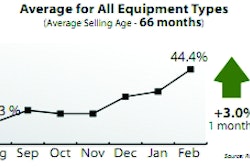Whether you are in the market for a car or a hydraulic crane, there are questions any buyer must ask before he or she signs on the dotted line. You enter into each transaction with some idea of what you want the equipment to do, how hard you plan to use it, frequency of repairs – and of course, your budget.
But consider this: if someone purchased a compact car because it was economical, fuel efficient and fit into his garage, he would most likely not decide one day to tow a boat with it. Good sense would suggest that the car was too small and that such an action would likely damage everything involved.
It is an unfortunate reality, however, that a construction professional who would never consider towing a boat as described above is much more likely to push the capacity of a $90,000 crane beyond what it was ever intended to do. It may not be a coincidence that the average construction company loses about two weeks of productive time per crane each year to maintenance, damages and mechanical failure, which can translate to up to 30% of the cost of the crane. And as some business owners can attest, sometimes two weeks is a low estimate.
When you buy a crane, the following pre-purchase considerations are critical:
1. Consider the work of the equipment – and the objectives of the company. CEOs and operators should think beyond the immediate job or jobs before selecting equipment. Very often a company will purchase a crane that suits their immediate needs. Then other uses are found for the crane around the same job, but the crane may not be able to support the new tasks.
Consider whether you will need to lift a large number of small loads or a few major ones. What materials will you be moving most often? Will you need to be lifting the loads just one or two stories, or much higher? Will you be using the crane every day? And for how long? What might you need the crane to do in a year? Is your company hoping to take on larger jobs and can the crane you are considering support that objective?
2. Consider the working area. Assessing your most typical work environment can help you understand which crane will suit your work, rather than having to at some point adjust your work to suit the crane once it is on the job. Will your work areas be wide open or perhaps a little more confined? Will you have to have freedom to move in a 360 degree radius? Will you have to work mostly overhead or mostly in front of the body of the crane?
Besides the actual working area, there are other elements of your work environment to consider when making an equipment selection. For example, an environment with an excessive amount of dirt, shavings or other particulates will have a greater negative impact on the efficiency of oil lubrication than grease lubrication.
3. Consider the type of controls that fit your work style. Determining how you or your operators will want or need to control a crane is as important as the kind of loads you'll be lifting. A fixed control station may be a good fit for some operators, but may result in obscured visibility for the others. A top seat station offers better visibility, but may still be too remote from the lifting area for some operators. Remote -controlled operation allows an operator to get much closer to the actual lift area, but the signal can be compromised by radio interference.
Some operators may choose to employ a hybrid of these types, but whatever decision is made, it is better to decide what control works best with your operating needs and style than try to adapt an operator to the control.
4. Consider the ease and frequency of repair. Every crane needs to be serviced at regular intervals, and at some point in a crane's working life, it will need replacement parts. Before purchasing a crane, consider how complicated a regular oil or grease change might be, or how difficult it might be to acquire the parts to complete more substantial repairs. Also, review the performance record of crane manufacturers and models to educate yourself about potential problems that may develop.
5. Consider the reliability of support and service after the sale. Available support after the sale of a hydraulic crane should be a major factor in your decision making. Is the sales team from whom you are preparing to make a purchase equipped to anticipate your needs and service your equipment on a routine basis? How experienced are the service technicians, and what is the approximate wait time for a scheduled service? Can any competent, certified repair technician complete the service or repair, or will you have to pay to transport a crane to a special service center that may end up adding thousands of dollars in transit costs in addition to the cost of actual servicing?
For example, Fascan's service technicians make the inspection of the truck standard, along with the inspection and service of the crane. The technicians look for developing problems as well as attend to the designated repair or service.
These considerations may all appear to be common sense. Yet, every year businesses set out to add a crane to their fleet using an incomplete set of criteria to make their decisions. Taking some extra time to do research, and to consult the people who will be using – and have used – the model crane you are considering, can save time and money in the short and long term.
Fascan International is the sole U.S. distributor of Fassi Cranes.




















